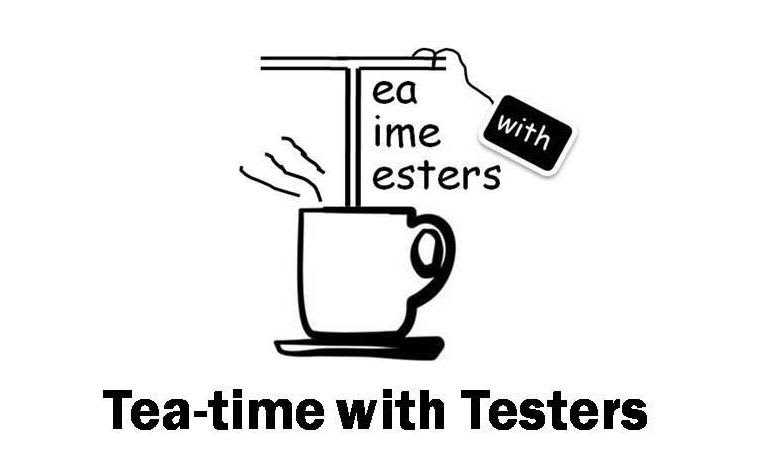They say interesting things happen to you when you expect the least. I had such an interesting experience lately.
If you are active on Twitter, some of you might have noticed my reports on Test Leadership Congress 2020. For those who don’t know, I am not a tester. When I was asked if I would like to write about my experience for the conference, I was unsure but excited. And with my official entry in this congress scene, I was testing the waters and trying to get the feel of the interesting world of software testing and tech-leadership which I was experiencing through this congress for the first time.
If someone would have told me, “Hey, you are going to attend a conference in NYC this summer .” I would have said yea, sure. We are in a global pandemic, what exactly you did not miss? I was 100% sure, this water was too cold for me. But here I am after four weeks, writing an article about my understanding of the testing world. And I have built this understanding by attending a conference that should have been happening in New York but ultimately I attended from my cosy home office in Switzerland. I attended it on my computer, listening to and learning from great people from across different time zones. Thanks to the technology that made it happen. But, a HUGE thanks to the testers who made sure that this technology worked reliably. The more I reflect on my entire experience with technology, the more I realize that it is humans behind the technology who make sure that it works, against all odds.
And hence I wonder, do we need Batman if we have testers?
Attending this conference made me realize being a tester is not an easy job and for sure it takes one to be the master of the many trades. And here are some of the lessons I learned around what it takes to be a great tester (from the sessions that I could attend):
Continuous learning is crucial
This has been my biggest take away from this conference. If you are a tester, you must not stop learning new things. In four weeks of the conference, I was exposed to so many different topics, themes, areas of the tech industry and to be a great tester means to be able to cope with all these dynamic and vast things. I can’t see any other way than a continuous learning attitude to make it happen.
The beautiful thing about learning is that nobody can take it away from you. – B.B. King
If you ask me, what I got from attending the sessions is beyond valuable. Over the weeks I gained knowledge, confidence, and the ability to understand a topic, I didn’t even know existed before. Can I use all this knowledge in my current job? Maybe not. Will it push me forward in the future? Possible. Will all this have an impact on me? Most likely YES.
People matter (the most)
Softwares are made ultimately for people and by people. And hence, testing better is human-centric. By people, I do not only mean the end-user but also the people in the team that work together to deliver software.
And this fact kept coming up in some of the other forms from different sessions that were delivered at the conference. For example –
An interesting story shared by Dawid Pacia in his talk, “Startup meets quality – a short story of QA Game changer” emphasized the importance of valuing the employees and the teams. And how much it is important to work together as a team. The quote from Richard Branson stuck with me for long –
“Clients do not come first. Employees come first. If you take care of your employees, they will take care of the clients.”
The team-building workshop by Brittany Sherell was so much fun in a serious way which made me realize how important it is to grow as a private person also as a business person. And again, the importance of working as a team as she shared strategies to build a solid team:
- Discuss team personalities and preferences (survey, a team meeting, etc.)
- Collaborate as a team on how each member can use their strengths to contribute most powerfully.
- Create an environment that welcomes two-way, continuous feedback
Communication is the key and giving Feedback is a skill
Good testing is incomplete without communicating about the information found in a way that people would be able to relate to. And so is one’s ability to give and receive feedback effectively.
Multiple sessions shared this key message in a way and I can’t agree more
“Why is there a Marble on my Nose?” by Angela Riggs made me realize how important it is to understand that even at work, we can not separate our emotions from ourselves as an individual. People need time and space to get through their emotions. Negative emotions reduce people’s capacity for effective and productive work.
On communication skills, Angela said it is a way of transferring ideas, it happens whether or not we intend it to happen. Effective communication means adapting your communication style for different audiences. Communication makes us better testers because we have more awareness and control over the ways we share and receive information.
On feedback skills, Mike Lyles said in his session, “Constructive criticism is imminent, but we should remember to praise in public and criticize in private. Giving and accepting feedback, honestly, holds the team accountable for continuous training and education with open door policy.
There was another great session by Priyanka Halder where she shared the FBI Framework for communication and feedback:
- •F = Feeling: What emotion did the action or behaviour of the other cause you? (Are you angry, anxious, sad, disappointed, or happy, surprised, thankful?) •
- B = Behaviour: What was the exact action that caused this emotion? (Note that you should not use the phrase “you always” or “you never”)
- I = Impact: What were the consequences of this action?
Data is the new fuel
Data and hence test-data plays a critical role in testing effectively.
Joshua Russell his session “Functional Test Data” emphasized this point. And honestly, this was one of my key sessions where I started to realize what is really happening behind the curtains. He recommended, to create the test data that tells a clear story, with believable details, and is carefully curated, including the use of personas. Well, this made me really happy actually. At that moment, I was convinced that the user-persona that I represent in my personal life is surely going to be part of someone’s test-data and thus making sure to consider my needs as a user.
Mindset is everything and Change is the only constant
Based on my learning about testing, by attending this conference for over a month, I learned that an important part of testing happens in the tester’s mind and not really on their computer. Also, testers need to be flexible with changing contexts and changing their way of testing accordingly.
Amy Jo Esser made an everlasting impression on me with her outstanding talk around change and mindset.
To be the best version of ourselves, we need to change our habits which in turn can change our lives. Easier said than done, I know and this is why we need rules to guide us in the process of embracing the change. Amy Jo gave us three rules:
Rule One.
Make it a must. A Necessity. A non-negotiable. Create and write down a big why. You must master this skill/habit
Rule Two.
“Eat that Frog” first Brian Tracy has said, that your “frog” should be the most difficult task on your things-to-do list. The one you are most likely to procrastinate on.
Rule three.
Start tiny and atomic. Tiny habits and atomic habits. To change your habits and so your life seriously. On your journey always keep one thing in mind. “Every struggle s one step closer to greatness”
Christina Thalayasingam talked about Full Stack Testing which I believe also means that testers need to be flexible to cope with changes and work on their mindset to deal with those.
If you wonder “why should we go with full stack testing?”Christina answered that it is because we will have the ability to spot issues not just in functionally but any quality issue and that will enable us to narrow down bugs at an early stage. According to her, full-stack testing enables a quick feedback mechanism for every change. It is not required to rely on test teams working in silos and it creates business value by giving fast feedback loops on all layers of a technical process and always keep in mind, “You can’t change your destination overnight, but you can change your direction overnight.”
Do not underestimate the power of Community
The community of Practice and Interests are powerful aids for testers to achieve desired culture change in the organization. At the same time, it matters that testers know how to contribute to communities and how to bring best out of those.
“How can we create links between different people?” you may ask. Emna Ayadi, in her session, answered this – we need to create a community of practice.
When groups are isolated (testers, developers, etc.) it’s easy to blame one particular group. Mixing the groups is effective for teamwork, which means to bring people together with the same interests but not the same skills. A Community of Practice is a combination of Community, Domain, and Practice.
In “Growing a Culture of Quality”, session Simon Prior talked about the first steps which need to be done to grow a culture of quality. Before changing the quality mindset in your organization, define where you are now and where do you want to be. Be clear on it and then you can define how to come from 1 to 2!
Automation helps but uses it wisely
Paul Holland shared interesting stories with us. On automation in testing, he recommended asking – what is your biggest fear? The answer to this question gives us more input for our testing strategy and coverage of the required documentation. UI automation is often used too much and created by non-developers. When you take a tester away from testing and have them write automation you likely lose a good tester and gain a bad developer. Automation will likely not increase your coverage, decrease your costs, save your time, or allow you to reduce headcount. Unless you also increase risk. Automation can give you a decent sanity check of your product and execute in less time than a human performance the same checks.
I could go on and on and write more about the fascinating world of testing. But I guess I should take a break here. Over one month of interesting experiences, knowledge exchange, and inspiration, I couldn’t be more grateful, that I had the chance to be a part of this world and community. The testing community is very engaging which reflects in the way you support and help each other.
The more I reflect on the key lessons I shared above, the more I start thinking of Batman who is my favourite superhero. I am very convinced that being great at testing requires practice, skills, courage, consistency, and a strong mindset. And Batman has it all.
This makes me wonder, do we need Batman if we have testers?
A very special thanks to Anna Royzman and her team who did an amazing job organizing the conference and leading it in such difficult circumstances and never losing their smiles.
I am looking forward to meeting you all again. Until then, stay safe, take care, and love what you do.

